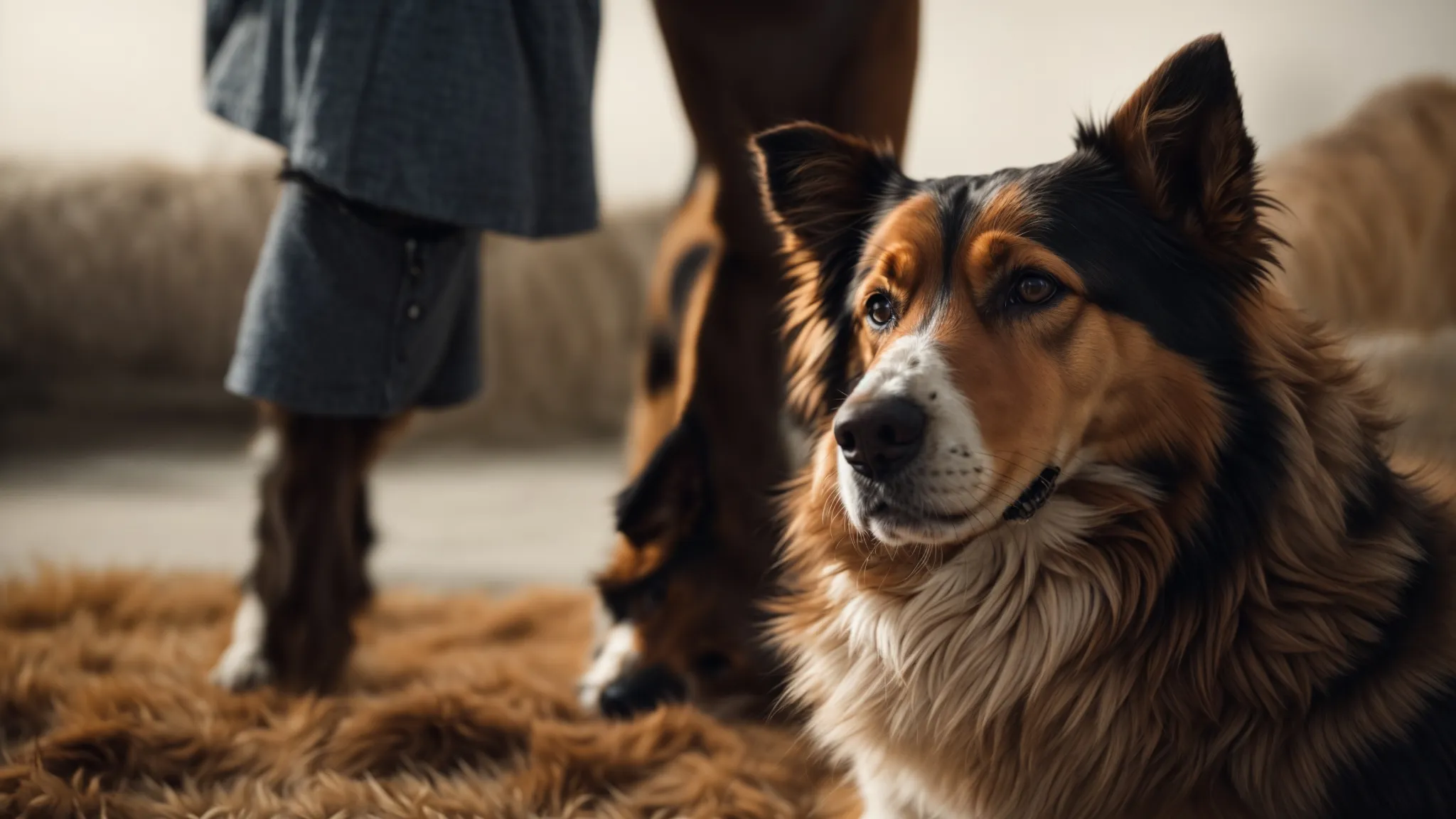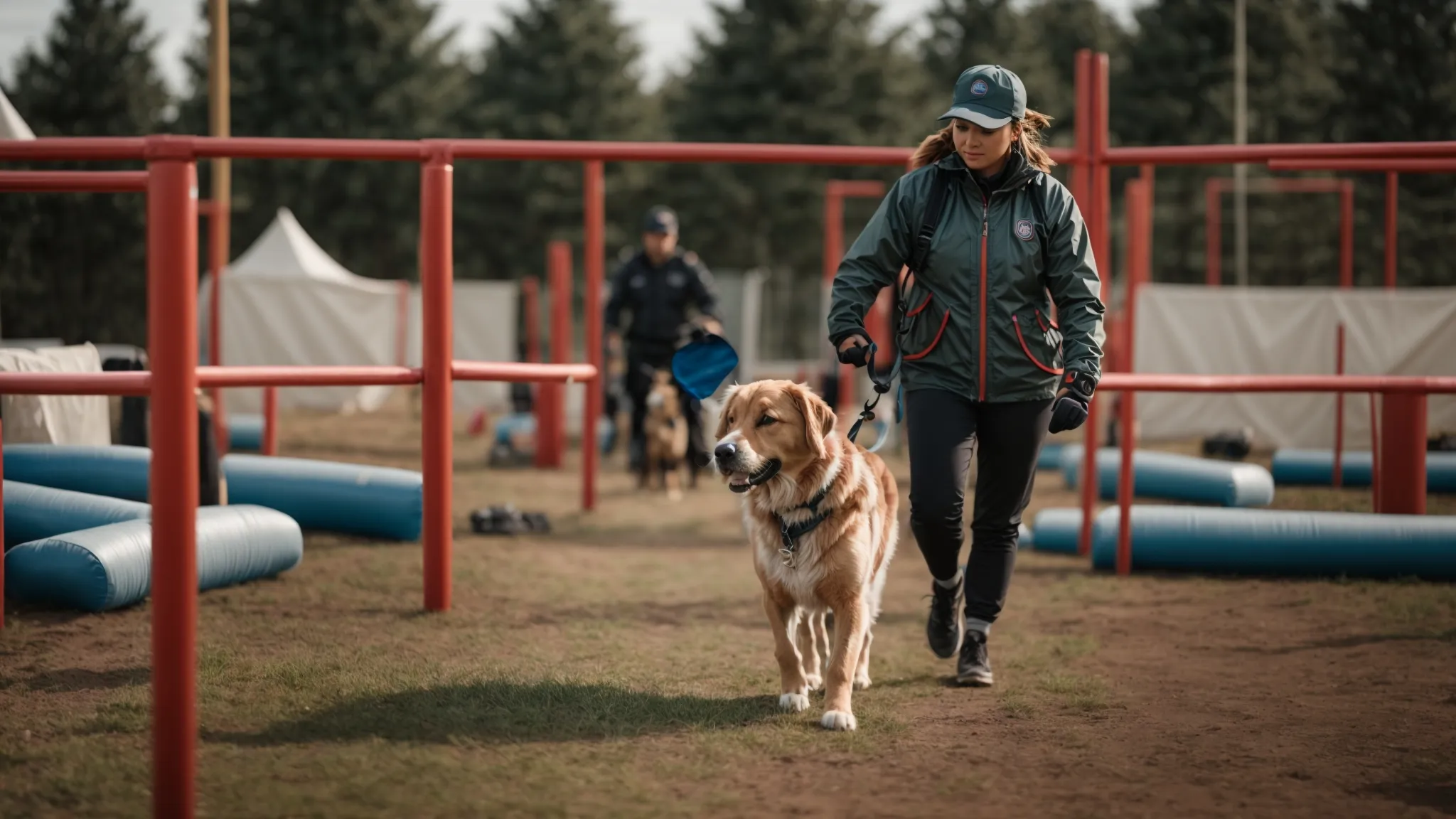How Emotional Support Dog Training Enhances Mental Health
Service Dog Training: Building Skills for Independence
Service dog training transforms puppies into invaluable companions for individuals with disabilities. This specialized form of dog training goes beyond basic obedience, focusing on teaching specific behaviors that enable dogs to assist their handlers in daily tasks. The American Kennel Club recognizes the importance of service dogs and supports their training, regardless of dog breed. In this article, you'll discover the key elements of service dog training and how these exceptional canines learn to support independence.
Key Takeaways
- Service dog training requires specific breeds and focuses on positive reinforcement techniques
- Basic obedience forms the foundation for more advanced service dog skills
- Tailored training plans address the unique needs of each handler-dog team
- Public access skills are crucial for service dogs to navigate various environments effectively
- Gradual desensitization helps service dogs confidently handle crowded spaces and distractions
Understanding the Foundation of Service Dog Training

Service dog training builds on a foundation of carefully selected canine traits and fundamental obedience skills. You'll find that successful service dogs often come from breeds known for their intelligence and trainability, such as retrievers or herding dogs, rather than high-energy terriers. The training process relies heavily on positive reinforcement and operant conditioning techniques to shape desired behaviors. As you begin this journey, you'll focus on teaching basic obedience commands that serve as building blocks for more complex tasks. These initial steps create a strong bond between the dog and their human partner, setting the stage for a successful working relationship.
Identifying Key Traits in Potential Service Dogs
When selecting potential service dogs, you'll look for specific traits that indicate a dog's suitability for intensive training. These include a calm temperament, high intelligence, and a strong desire to please their handler. Unlike therapy dogs, which primarily provide comfort, service dogs must perform specific tasks to assist their handlers. You'll assess the dog's response to basic commands, their ability to focus in distracting environments, and their reaction to wearing a collar and walking on a leash. It's crucial to evaluate the dog's bite inhibition and overall temperament to ensure they can safely interact with the public during their service career.
Teaching Basic Obedience as the First Step to Independence
Basic obedience training forms the cornerstone of service dog preparation, laying the groundwork for more advanced skills. You'll start by teaching fundamental commands like sit, stay, come, and heel, which are essential for a dog's safety and control in public settings. These exercises not only improve the dog's behavior but also enhance their mental health and sociality. As you progress, you may incorporate elements of dog agility to boost the canine's physical fitness and problem-solving abilities. This foundational training also prepares dogs for potential roles as therapy dogs or to earn their Canine Good Citizen certification, showcasing their readiness for public interactions.
Designing a Customized Training Plan for Each Dog

Creating a tailored training plan for each service dog ensures optimal results for both the canine and their handler. You'll find that a one-size-fits-all approach falls short when dealing with the diverse needs of individuals requiring assistance dogs. While traditional methods like those used in dog shows might work for spaniels, service dog training demands a more specialized approach. It's crucial to avoid harmful techniques such as shock collars or punishment-based methods, focusing instead on positive reinforcement. By carefully assessing the handler's specific requirements and integrating task-specific skills into daily routines, you'll develop a comprehensive training program that addresses the unique challenges faced by each team.
Assessing the Needs of the Handler for Personalized Training
Assessing the handler's needs forms the cornerstone of personalized service dog training. You'll explore the individual's specific challenges, whether related to mobility, medical conditions, or psychological support, to tailor the dog's skills accordingly. This process may involve addressing any fear or aggression issues the handler might have with pets, ensuring the service dog becomes a trusted companion rather than a source of anxiety. By understanding the handler's daily routines and challenges, you'll identify key tasks the dog must learn to enable greater independence, from retrieving objects to providing stability during movement.
Incorporating Task-Specific Skills Into Training Routines
Integrating task-specific skills into service dog training routines requires expert knowledge of canine capabilities and handler needs. You'll build upon the dog's natural abilities, such as a border collie's innate agility, to teach complex tasks like retrieving medication or alerting to changes in blood sugar levels. While not all service dogs need the intense focus of a detection dog, you'll incorporate elements of scent work and targeted responses to ensure the dog can effectively assist their handler in various situations.
Mastering Public Access Skills for Service Dogs

Mastering public access skills is crucial for service dogs to effectively assist their handlers in various environments. You'll train your dog to navigate crowded spaces, maintaining focus despite distractions. This requires clear communication between you and your canine partner, honing their natural instincts to respond to subtle cues. A well-trained service dog acts as a pointer, guiding their handler through complex situations while managing their own stress levels. Understanding dog behavior in public settings helps you anticipate and mitigate potential challenges, ensuring seamless integration into daily life.
Navigating Crowded Environments Confidently and Safely
Training your service dog to navigate crowded environments confidently and safely requires patience and consistency. Focus on desensitization exercises, gradually exposing your german shepherd or schnauzer to busy areas while reinforcing calm behavior. Address any anxiety your dog may exhibit in crowds through positive reinforcement techniques common in animal training. Teach your service dog to maintain a close heel position and respond promptly to commands, even in distracting situations. These skills are crucial not only for everyday assistance but also for specialized roles like search and rescue:
- Practice in progressively busier locations
- Reinforce calm behavior and focus
- Teach tight heel position and quick response to commands
- Use positive reinforcement to build confidence
- Simulate real-world scenarios for practical training
Conclusion
Service dog training forms the foundation for independence, equipping canines with essential skills to assist their handlers effectively. Careful selection of suitable dogs, combined with tailored training plans, ensures optimal results for both the service animal and the individual they support. Mastering public access skills enables service dogs to navigate complex environments confidently, enhancing their handler's quality of life. Through expert training and positive reinforcement techniques, service dogs become invaluable partners, providing crucial assistance and companionship to those in need.
